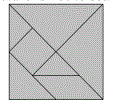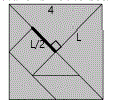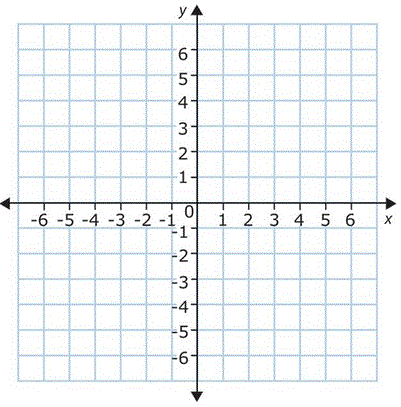 1) A tangram puzzle has 7 shapes that can be put together to make a square as shown. If the side of the large square measures 4 inches, what is the area of the small square?
1) A tangram puzzle has 7 shapes that can be put together to make a square as shown. If the side of the large square measures 4 inches, what is the area of the small square? |
 Use the Pythagorean theorem.
Use the Pythagorean theorem.
1. If you can find the length of a side of the small square you can determine it's area.
2. The length of a side of the small square is half the length of the adjacent side (call it "L") of the large right triangle whose hypotenuse is 4 inches (the outer edge length).
3. Since the other 2 sides of the large triangle are the same, determine the length of one of those sides:
Then L2 + L2 = 42.
4. Solve this for L = _____
5. Take half of that = _____
6. The area of the small square is _____.
|
 2) Rita wants to draw a square on a coordinate graph that's rotated a little bit around its center. She puts one vertex at (3, 0), one vertex at (0, 1), and one vertex at (1, 4). Where will the last vertex go to complete the square? Use the coordinate graph provided.
2) Rita wants to draw a square on a coordinate graph that's rotated a little bit around its center. She puts one vertex at (3, 0), one vertex at (0, 1), and one vertex at (1, 4). Where will the last vertex go to complete the square? Use the coordinate graph provided.
|
1. Plot the 3 points on the graph.
2. Determine the offset of the second point (0, 1) from the first (3, 0). This is going from point 2 to point 1. The offset is (___,___).
3. Apply this offset from the third point (1, 4) to get the coordinates of the 4th point = (___,___).
|